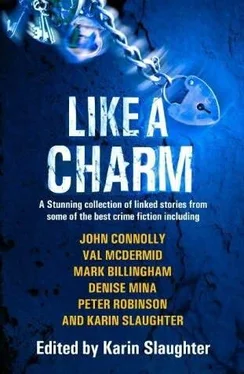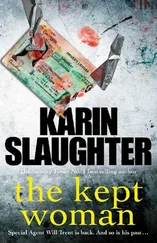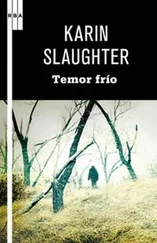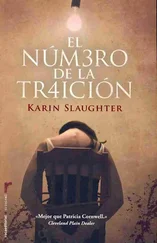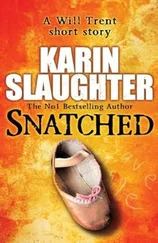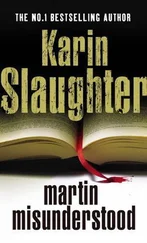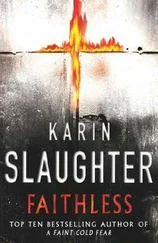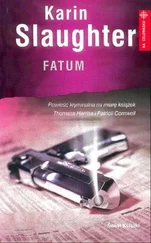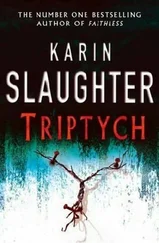Miles nodded. Kevin looked even more embarrassed.
'I gave it to my girlfriend, it was like a charm, you know, off a bracelet. It was about so big.' He indicated with his fingers how small the charm was.
'Does she still have it?' Miles asked.
'I dunno, we broke up. Is that what this is all about? I think it was quite old, like antique gold but it was very small, a little man I think, like a pixie.'
Miles hesitated; he didn't understand the significance of the charm because he had been the only one not present at the Christmas gift exchange.
At the police station, the detective in charge of Frogton's disappearance looked into the hat box with distaste.
'What is it?'
'It's a dead Jack Russell dog and its body was wrapped in this towel that belongs to the clinic. The kid also found a gold charm of a goblin, you know a charm that hangs off a bracelet. I called Hilda our other receptionist and she recalls Peter Frogton giving it to Carol last Christmas. She said it was a little goblin, not a pixie, a gold goblin sitting on a mushroom.'
'Does he still have it?'
'No, he gave it to his girlfriend but they broke up and she threw it away; well, that's what she said. It was a goblin but she couldn't remember if it was sitting on anything.'
Miles remained at the station for two hours going through all the details about how dogs were collected for the incinerator by the mortuary company. The dogs were burnt and the bones and fragments crushed so there would be no remains left. It was possible that Peter Frogton was murdered, his body taken in the place of a Great Dane and incinerated. The Jack Russell was supposed to have been incinerated that same morning but Kevin had collected it for burial in his grandmother's garden.
There was a very long pause. Miles was flushed red in the face while the police officer grew paler by the minute.
'Jesus Christ, you think she put your partner in a doggy bag?'
Before they arrested Carol, they checked her background and discovered her previous prison record. This made for a lot of embarrassment, as they should have been more thorough.
'Apparently she lied to us on her letter from her previous employers. She had only worked there for two years,' Miles said to a stunned, white-faced Hilda. 'Before that she was in prison.'
'Prison?' Hilda stuttered, hardly able to take it all in.
'She murdered her mother,' Miles said quietly.
'What, Carol did? But she couldn't have done, she was going to spend Christmas with her.'
'Well she lied, Hilda, Carol lied to all of us; she apparently hit her mother over the head with a hammer.'
'No, surely not, her own mother?'
'Yes, that's what I was told.'
'Why?' Hilda asked in a shocked gasp.
'No idea, they didn't tell me,' Miles said flatly.
Carol was arrested at the surgery at nine fifteen on May 3rd 1972 and subsequently charged with the murder of Peter Frogton. She never gave an explanation, nor did she admit her guilt or deny it; she appeared totally disinterested in the whole proceedings. Without a body and with not one witness, it was doubtful they would be able to make the charge stick. At the time DNA testing was not used and although the white towel might have Peter Frogton's bloodstains on it they could also have been the Jack Russell's.
The police had removed the gold charm bracelet as part of the evidence, noting that it was minus the goblin. They subsequently interviewed Kevin's girl-friend. She was evasive and tearful but then admitted she had lied. She hadn't thrown the goblin away; she said she had thought Kevin might ask for it back and she wasn't going to give it to him. The detective looked at the small gold charm in the palm of his hand. The little goblin sitting on a toadstool was identified as the charm given to Carol by Frogton; when shown to Hilda, she confirmed it was definitely the same one.
During Carol's final interrogation she had become increasingly abusive, often laughing at some private joke she never shared with anyone. The detective held up the charm bracelet, letting it dangle.
'Does this belong to you, Carol?'
No reply.
'This was a gift to you from Peter Frogton, wasn't it?'
No reply.
'This charm was attached to this bracelet by Peter Frogton. It was a Christmas gift to you, wasn't it?'
No reply.
'Will you look at this little charm? It was on this bracelet when you killed Peter Frogton.'
No reply.
'Carol, will you look at this charm and tell me what it is?'
At last there was a response; she looked up, her eyes like ice chips, and she let out a high pitched screech.
'It's a fucking gold Jack Russell dog, you cunt.'
Carol never admitted killing Peter Frogton. She was found mentally unfit to stand trial and sent to Broadmoor, a prison for the criminally insane. The bracelet was tagged, bagged and listed as evidence, then stored in the police station's evidence lock-up, with the goblin re-attached in case it got lost.
THE SNAKE EATER BY THE NUMBERS by Lee Child
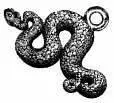
Numbers. Percentages, rates, averages, means, medians. Crime rate, clearance rate, clearance percentage, increase, decrease, throughput, input, output, productivity. At the end of the twentieth century, police work was about nothing but numbers.
Detective Sergeant Ken Cameron loved numbers.
I know this, because Cameron was my training officer the year he died. He told me that numbers were our salvation. They made being a copper as easy as being a financier or a salesman or a factory manager. We don't need to work the cases, he said. We need to work the numbers. If we make our numbers, we get good performance reviews. If we get good reviews, we get commendations. If we get commendations, we get promotions. And promotions mean pay and pensions. You could be comfortable your whole life, he said, because of numbers. Truly comfortable. Doubly comfortable, he said, because you're not tearing your hair out over vague bullshit subjective notions like safe streets and quality of life. You're dealing with numbers, and numbers never lie.
We worked in North London. Or at least he did, and I was assigned there for my probationary period. I would be moving on, but he had been there three years and would be staying. And North London was a great place for numbers. It was a big manor with a lot of crime and a population that was permanently hypersensitive to being treated less well than populations in other parts of London. The local councillors were always in an uproar. They compared their schools to other schools, their transport spurs to other transport spurs. Everything was about perceived disadvantage. If an escalator was out at West Finchley tube station for three days, then they'd better not hear that an escalator had been fixed in two days down at Tooting Bec. That kind of thing was the birth of the numbers, Cameron told me. Because stupid, dull administrators learned to counter the paranoid arguments with numbers. No, they would say, the Northern Line is actually 63 per cent on time up here, and only 61 per cent on time down there.
So, they would say, shut up.
It wasn't long before police work fell in with the trend. It was inevitable. Everything started being measured. It was an obvious defensive tactic on the part of our bosses. Average response time following a 999 call? Eleven minutes in Tottenham, Madam Councillor, versus twelve minutes in Kentish Town. Said proudly, with a blank-but-smug expression on our bosses' meaty faces. Of course, they were lying. The Kentish Town bosses were lying too. It was a race towards absurdity. I once joked to Cameron that pretty soon we would start to see negative response times. Like yes, Madam Councillor, that 999 call was answered eleven minutes before it was made. But Cameron just stared at me. He thought I had lost it. He was far too serious on the subject to countenance such a blatant mistake, even in jest.
Читать дальше
